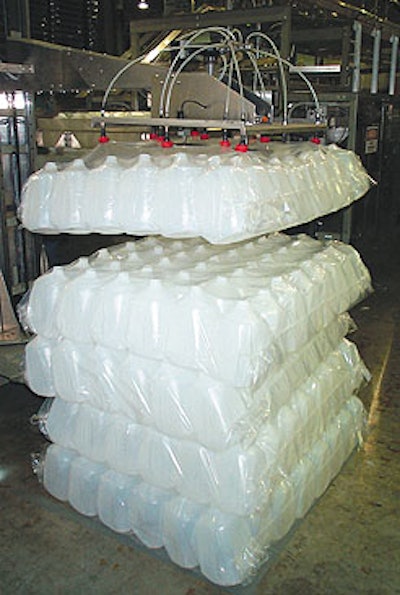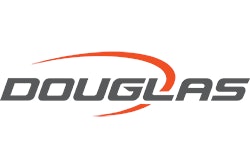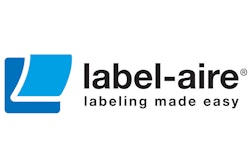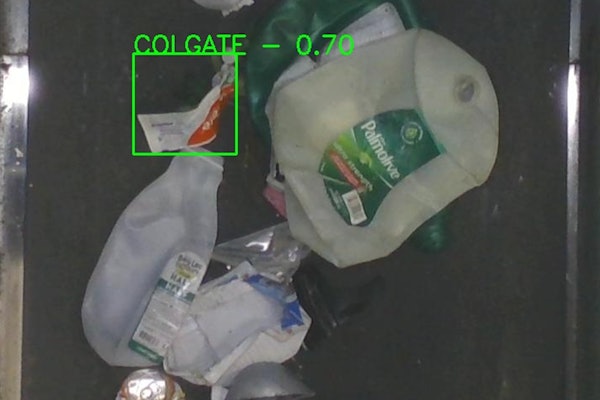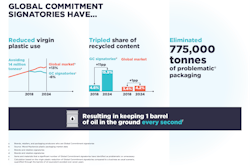When you think of beverages, filling at 180 containers/min is not considered fast. When the containers are 1 gallon in size, though, that’s pretty fast. High output is just one of the benefits of a $4 million line started up in June at Nature’s Way Purewater, Pittston, PA. The turnkey installation, including engineering, integration, equipment purchases, and networking, was by Crompton Sales (Methuen, MA).
The line fills containers ranging from 2.5-gal down to the 1-gal size that was run during Packaging World’s visit. It operates two shifts five days/week. This line is the first time the three-year-old company has packed gallons, which now represent 90% of the line’s output. The company produces under its own label as well as private label brands.
The high-density polyethylene jugs are received on pallets in nine layers each of a 6 x 8 pattern. Each layer is bagged in low-density polyethylene film. The jugs are supplied by a regional plant of Reid Plastics (Diamond Bar, CA), which also blow molds the 2.5-gal size. The lightweight loads are unloaded manually from a docked trailer truck that backs up to within about 10’ of the line. For the 1-gal size, twin infeed stations, each with its own robot, sit alongside the manual infeed station for the 2.5-gal size (see sidebar).
Twin robots
As needed, a pallet load of jugs is set into position next to either of the two pick-and-place robots from Custom Metal Design (Winter Garden, FL). “Each robot is capable of unloading 120 jugs/min,” says Fred Gubitose, Nature’s Way president and chief executive officer. “Working in parallel, they can easily handle the line’s 180 jugs/min output.”
Each robot picks the top layer of bagged jugs from locations on its opposite sides (see video). When the robot is done unloading one pallet, it automatically rotates 180 degrees to the other position to begin unloading the new pallet. Meanwhile, the operator replenishes the now empty spot with a new load. The robots employ 11 vacuum cups to grip the bagged jugs.
The bagged jugs are placed on a conveyor table before a hot wire-equipped assembly lowers to cut the film. Powered rollers on opposite sides grip the film edges, peeling away the LDPE film, and direct it into a metal bin below the infeed table. The 6 x 8 group of unbagged jugs is conveyed to the next section of the Custom Metal machine where the jugs release via a gate one row at a time.
The jugs transfer at a 90° angle onto the main conveyor that inclines upward to a 11’ height. The overhead conveyor run provides 1귔’ of accumulation across the warehouse. Gubitose is a big fan of lengthy conveyors that can provide an inventory buffer between key operations. This accumulation allows a replacement of the truck trailer without interrupting the flow to the filler, he says. Front to back, the entire line comprises around 2ꯠ’ of conveyor.
Ahead of the filling room, the overhead conveyor declines and the jugs are labeled. That’s done by one of a pair of Label-Aire (Fullerton, CA) Model 2111CDL labelers. Gubitose says that the line keeps running even during label roll changes as the containers automatically feed to the other labeler once the rollstock on one is exhausted.
Filling and capping
In the filling room, the jugs enter a 30-valve rotary filler that is said to be among the biggest in the water industry running at this high speed (see video). Gubitose selected the filler because of Federal Mfg.’s (Milwaukee, WI) experience in filling 1-gal jugs for dairy applications. “If it works for milk, it should work for water,” he surmised. “The filler has performed well and is very accurate on fill volume.” Gravity-filled from a bowl, the water has been previously purified and filtered. The company’s on-site storage capacity is in five 50ꯠ-gal tanks.
Bottles transfer by starwheel from the filler to the integrated 10-station capper that applies press-on 38-mm Snap-Cap® closures from Portola Packaging (San Jose, CA).
From the filling room, a serpentine conveyor section provides more accumulation ahead of a case packer from Douglas Machine (Alexandria, MN). Upstream of casing, the jugs are directed into the proper infeed lane via a servo-operated system from Douglas.
Saves $600ꯠ
The Model CMWACP continuous-motion, wraparound case packer erects, loads, and seals the cases at a rate of 60 cases/min (see video).
Gubitose’s original plan for the line was to use a drop-style packer to load the jugs into trays or bliss-style boxes, a setup that would also have required gluers or tape sealers. “I’d always liked a [wraparound] box, and I felt bad that we couldn’t do that for 1-gallon jugs,” recalls Gubitose. He met with Douglas representative Todd Welken of Welpak (Exton, PA), who presented the idea of a setup that produced wraparound cases. Gubitose formulated a new plan using a Douglas wraparound case packer. “I was able to eliminate two bliss case erectors and sealers from our original plan,” says Gubitose of the revamped layout. “It also meant one operator could handle our casing operations instead of two.” Clinching the plan was the fact that the Douglas packer could also accept 2.5-gal containers, making a second packer unnecessary. “It made sense to go this route because we could save about $600ꯠ compared to what we were originally considering,” notes Gubitose. The layout will allow the company to add a packer dedicated to 2.5-gal containers when demand grows.
Gubitose also prefers the way the jugs are loaded by the mechanical machine: “The Douglas case packer pushes the jugs into the cases gently, as if they were babies.” This feature will allow the company to use a lighter jug when it expands into in-house blow molding in the future.
Once laned in rows, package metering is via overhead paddles that rotate down between the rows of jugs. A cam-operated arm pushes the jugs sideways into an erected blank. The blanks are erected via vacuum pick-and-place cups. The case is then wrapped around the jugs, sealed with glue, and discharged.
Other case patterns Nature’s Way has packed include a 1-gal 3 x 2, and a 2.5-gal 1 x 2. They could produce a 1-gal 2 x 2 pattern, according to Gubitose. Pack pattern changes are tool-less using handcranks with digital indicators. “Changes can be made in about 20 minutes,” Gubitose says. “Changeovers between container sizes take about 45 minutes.”
The cases are printed on two sides by a Model 370 large character ink-jet coder from Willett America (Ft. Worth, TX). After coding, the cases convey up an incline to the high-level Alvey (St. Louis, MO) Model 923 palletizer and then to an Octopus stretch wrapper from ITW Mima (Tamarac, FL). It wraps the loads using 20"-wide, 5귔'-long rolls of stretch film (see video). “It’s fast,” remarks Gubitose. “It will wrap a pallet in less than about 12 seconds.”
“Fast” pretty much sums up the entire line.
See sidebar to this article: Bigger containers, shorter line
See sidebar to this article: The next wave in gallon merchandising?
